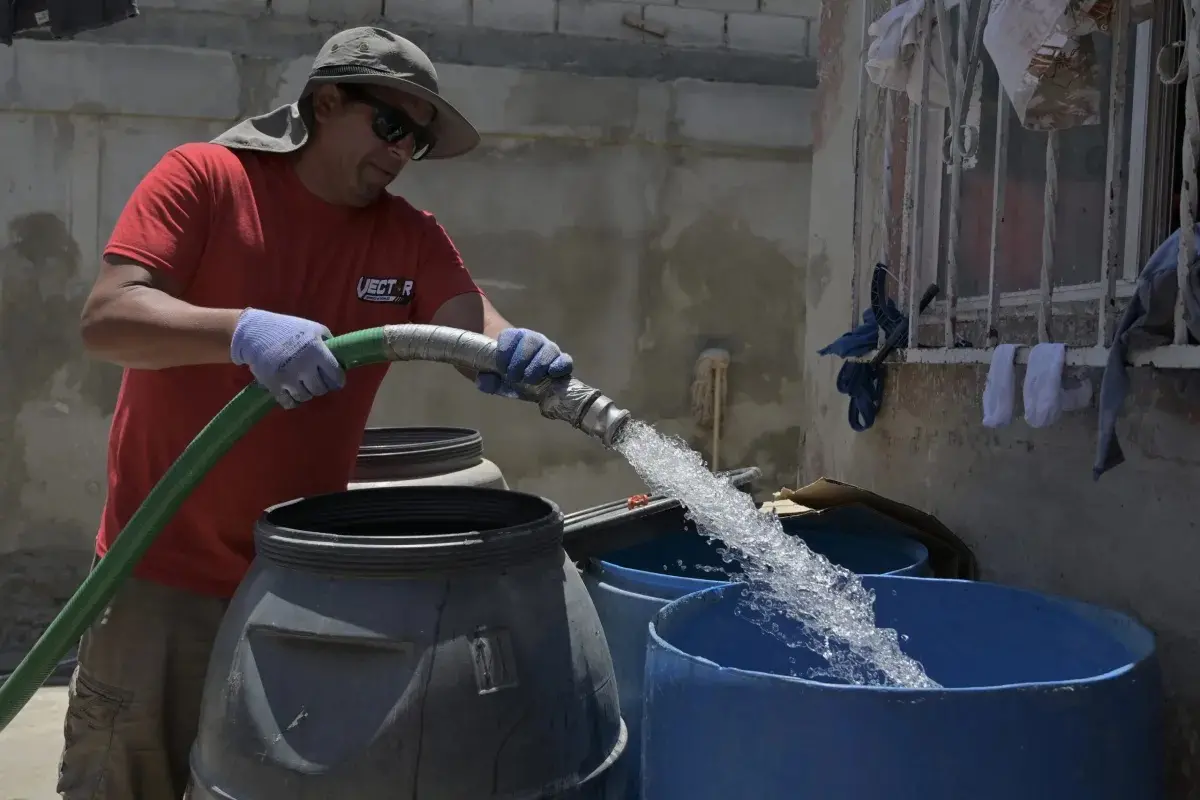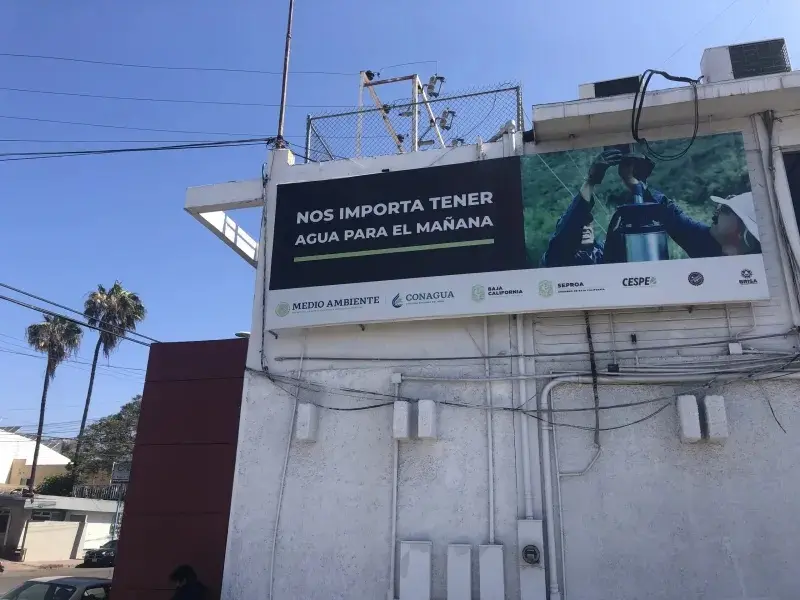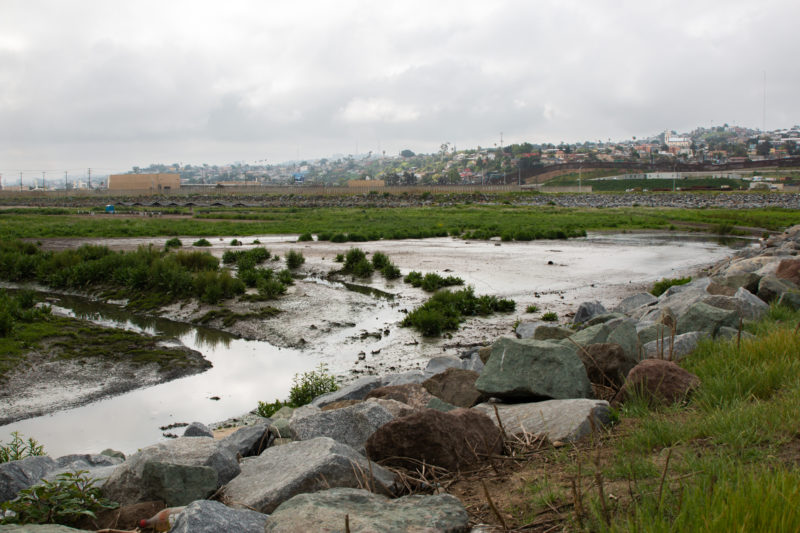
Tijuana is paying California for more water than it has in recent years as the city faces a growing population coupled with blistering drought that’s gripping the entire West.
Northern Baja is entitled by treaty to 1.5-million-acre feet of Colorado River water per year, which is Tijuana’s primary water source. But for years the amount that goes to Tijuana hasn’t been enough to quench demand.
That’s been the case since at least 1972 when the U.S. and Mexico first let Tijuana pay for water from California during a serious drought, before it had an aqueduct to carry river water through the Mexicali Valley. The population in Tijuana then was 400,000. By 2008, including neighboring Rosarito, it was well over 1.3 million, according to international agreements that created an emergency water purchase program allowing Tijuana to pay for water in times of crisis.

As a nonprofit journalism organization, we depend on your support to fund our nationwide Connected Coastlines climate reporting. Donate any amount today to become a Pulitzer Center Champion and receive exclusive benefits!
The agreements, passed in 1972 and again in 2008, both said that drought conditions over the Tijuana River watershed and continued growth in northern Baja had caused the region’s demand to exceed what it gets from the Colorado River. “Unless these emergency water deliveries are made the municipalities of Tijuana […] will suffer serious shortages of water,” the agreements say.
Tijuana can purchase emergency Colorado River water from California provided there’s enough to go around. That water is delivered through a cross-border pipeline connection at Otay Water District. But Mexico must pay Otay, the San Diego County Water Authority, and Metropolitan Water District in Los Angeles for the loss of that water to California, upkeep costs on infrastructure, the transportation of it to the border and delivery.
Records obtained by Voice of San Diego show Baja’s State Public Utilities Commission in Tijuana, called CESPT, ordered 3,215 acre feet of Colorado River water through the emergency purchase program beginning Aug. 1. That water would be delivered to Tijuana in increments of 643 acre feet each month through December. An acre foot of water is enough to supply a California household for a full year, but it likely stretches much further in Mexico where water consumption is lower per person.
The amount of emergency water Tijuana requested this year is a lot more than they requested in the past five, records show.
In 2018, Tijuana bought 293 acre feet for September and October. The city bought another 655acre feet in 2019 for July through September. Come 2020, the city purchased 1,394 acre feet for August through November. Tijuana didn’t purchase any water in 2021, and it’s unclear why. But that still puts 2022 as a record year with the city paying twice as much as it did in 2020 to carry the city through to 2023.
Why is Tijuana purchasing this water now? It depends on who you ask.

According to the international agreement, Tijuana isn’t paying for extra water from California. It’s purchasing water Mexico is already entitled to under a 1944 treaty that divided the waters of binational rivers of the Colorado, Tijuana River and the Rio Grande.
José Armando Fernández Samaniego, Baja’s secretary of water management, sanitation and protection under SEPROA, said the aqueduct carrying Tijuana’s share of the river from Mexicali to the coast isn’t big enough to carry all the water the city currently needs.
“It’s operating at maximum capacity,” he said. “Even if you had all the water in the world in Mexicali, it could only go through that tube that we have.”
Delivering water through Otay instead allows Tijuana to receive the water it’s entitled to by bypassing the Mexican aqueduct’s capacity limitations. But CESPT must shoulder that extra transportation cost.
CESPT, which is already deeply in debt, would pay $4.3 million—$86,921,802 pesos—for what amounts to a small water order. Receipts show Mexico paid enough for half that delivery through September.
Baja is paying California around $1,335 per acre foot for Colorado River water, which is slightly more expensive than what San Diego County Water Authority pays the Metropolitan Water District in Los Angeles for treated water, about $1,143 per acre foot.
“How can Tijuana depend on a (water source) that is not in the country? There must be a national solution to this problem at a cost much lower than the U.S.,” said Alfonso Cortez Lara, a researcher at COLEF, the College of the Northern Border based in Baja.
Cortez Lara, an academic with years of analyzing the water problem in Baja, said opting for the U.S. emergency pipeline is an extraordinary measure, but it is the result of years of neglecting long-term solutions to the coast’s lack of water.
“They allowed us to arrive at an emergency and now they say, ‘What’s the easiest way out? The most expensive.’ I don’t think that’s sustainable,” Cortez Lara said of the actions of Baja’s officials.
Of Mexico’s 1.5 million-acre-foot per year allotment, it’s not clear how much the country doles out to each city or farmer in Baja California.
A 2020 study by Black and Veatch showed demand already outweighed supply in Baja’s coastal zone, which includes Tecate, Tijuana, Playas de Rosarito and Ensenada. Urban demand was 154,133 acre feet per year and supply was about 120,748 acre feet per year.
“The city of Tijuana, which is the largest city of our state, is getting the brunt of the lack of water. That is why it requested emergency deliveries through the emergency connection at Otay Mesa in order to satisfy the peak needs during the summer,” said Roberto Espinoza Mora, operations manager at Mexico’s International Boundary and Water Commission called CILA.
Espinoza Mora acknowledged the high cost of that emergency water from California.
“But you know what water is the most (costly), the water you don’t get,” he said.
Northern Mexico Faces Less Colorado River Water in 2023
Mexico will get even less Colorado River water next year than it did this year.
Last week, the U.S. Federal Government shied away from forcing western U.S. states to ration Colorado River water more than they’ve already committed to under law. That same law dictates Arizona, Nevada and Mexico are again on the chopping block to absorb more water cuts next year. Mexico alone, which gets some of the smallest shares of Colorado River water, will take a 7 percent hit to its delivery come 2023.
This summer, Mexico’s federal government took the rare step of declaring a drought emergency for several Mexican states including Baja. That move grants the feds temporary powers to take over water supplies that would normally go to agriculture and reroute it to quench thirsty urban areas.
Like in the U.S., at least 80 percent of Mexico’s river share goes to agriculture. Negotiating with farmers to give up such a precious resource is extremely political on both sides of the border. At one point, Baja weighed buying water from Mexicali’s farmers as it has in the past. But that as a solution seems to have fallen off the table.
The 2020 study showed Baja’s agricultural demand from Mexicali to the coastal zone was 2.19-million-acre feet per year. Farmers’ supply of 2.24 million acre feet just covered demand. That amount is almost double what the entire region gets from the Colorado River. That’s because farmers also tap underground aquifers for additional supply.
Officials point to different water scarcity solutions. Fernández Samaniego argued the answer to Tijuana’s wastewater woes is desalination. De-salting ocean water for human use is one of the most expensive water sources in San Diego, at $2,800 per acre foot, more than double what it pays for Colorado River water.
Recycling wastewater can be cheaper. San Diego is spending billions on a new wastewater-to-drinking-water system called Pure Water. The U.S. wants to invest in wastewater recycling in Baja and tentatively agreed to support 50 percent of such a project in Tijuana, part of a suite of projects that would help put an end to a different environmental catastrophe: the sewage-contaminated Tijuana River.
Baja Water Agency in Deep Debt
CESPT, which owns, operates and maintains most of Baja’s water and wastewater infrastructure, is in dire financial straits. Its newest director, appointed in July, Victor Amador Barragán, said the agency has a deficit of $400 million pesos—about $19 million dollars. It owes hundreds of millions of pesos more in debts.
At a July press conference, Baja’s governor Marina del Pilar Ávila Olmeda acknowledged this publicly as well.
“We are going to rescue the (state) water agencies that until recently were exemplary at a national level, but today they are practically bankrupt,” she said.
Amador Barragán, who worked in finance for the city of Mexicali when Ávila Olmeda was mayor and later lead CESPT’s financial administration department, said the agency is going to start cracking down on unpaid utility bills.
Typically, residents have to wait in line at a CESPT office or pay an extra fee at a convenience store to pay water bills. CESPT wants to make that easier by setting up mobile offices at factories where large numbers of employees work. But the agency will also put more pressure on those with delinquent bills.
“We are going to increase the coercive measures to collect from people that don’t want to pay,” Amador Barragán told Tijuanapress.com.
He added that CESPT is beginning to install valves on the meters of delinquent customers that reduce water deliveries, called “reductores.”
Reporting on the Tijuana River sewage crisis is produced by Voice of San Diego in partnership with the Tijuanapress.com and with support from The Water Desk at the University of Colorado Boulder and The Pulitzer Center. Our binational, bilingual reporting and photojournalism series illuminates longstanding environmental issues that severely impact quality of life along the border.








